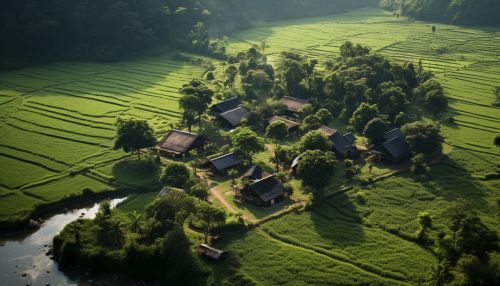North Vietnam
Introduction
North Vietnam, officially known as the Democratic Republic of Vietnam (DRV), was a state in Southeast Asia from 1945 to 1976. It was internationally recognized during the Vietnam War, when it fought against the South Vietnam and its principal ally, the United States.


History
Formation
The Democratic Republic of Vietnam was proclaimed on September 2, 1945, by Ho Chi Minh, who became the country's first President. The DRV was established in the northern part of Vietnam, which was previously under French colonial rule as part of French Indochina.
First Indochina War
The First Indochina War (1946–1954) was a major conflict in the Asian region, fought between the French Union's French Far East Expeditionary Corps and the Viet Minh, led by Ho Chi Minh and Vo Nguyen Giap. The war ended with the signing of the Geneva Accords in 1954, which partitioned Vietnam along the 17th parallel, with Ho Chi Minh's communist DRV in the north and the State of Vietnam in the south.
Vietnam War
The Vietnam War (1955–1975) was a prolonged military conflict that started as an effort by the South Vietnamese government to prevent the spread of communism from North Vietnam. The North, with the aid of its communist allies, fought against the South, which was supported by the United States and other anti-communist nations. The war ended with the fall of Saigon in 1975, leading to the reunification of Vietnam under the communist government of the North.
Politics
The Democratic Republic of Vietnam was a socialist state, guided by the principles of Marxism-Leninism. The Vietnamese Communist Party, led by Ho Chi Minh, was the leading and ruling party of the DRV. The government structure of the DRV was modeled after the Soviet Union, with a strong central government and a system of councils (soviets) at various levels.
Economy
The economy of North Vietnam was primarily agrarian, with rice being the main staple crop. The DRV implemented land reform policies, which aimed to redistribute land from landlords to peasants. Industrialization was also pursued, with the establishment of state-owned enterprises in key sectors such as mining, manufacturing, and transportation.
Culture
The culture of North Vietnam was heavily influenced by its Chinese and French colonial heritage. However, the DRV government promoted a national culture, emphasizing Vietnamese language, history, and traditions. Literature, music, and art were used as tools for political propaganda, promoting socialist ideals and patriotism.
